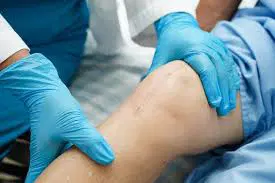A new type of suture that integrates electrical stimulation with traditional suturing techniques has been developed, showing promise in significantly accelerating wound healing and reducing infection risks. This mechanoelectric suture is made from biodegradable materials and generates electric fields in response to movement, potentially revolutionizing wound closure procedures and offering patients a faster and safer healing process.
In experiments conducted on rats, researchers reported in Nature Communications that this strong, flexible thread expedited wound healing by converting muscle movement into electricity. Chengyi Hou, a materials scientist from Shanghai’s Donghua University, stated that this substance “could change how we treat injuries” if proven safe for human use.
Previous methods for electrical stimulation relied on large external batteries, but the new sutures harness the body’s own energy. The thread is composed of magnesium, a metal that can be absorbed by the body, and biodegradable polymers. When the muscles surrounding the sutures contract and relax, the central layer of the thread rubs against the outer shell, transferring electrons and producing electricity.
In lab tests, the thread’s electrical stimulation was used to treat artificial wounds in dishes. After 24 hours, fibroblasts—cells crucial for healing—reduced the wound area from 69% to 11%, compared to only a reduction from 69% to 33% in untreated artificial wounds.
Rodents treated with the electrical sutures demonstrated faster recovery and a lower likelihood of infections compared to those treated with regular sutures or left untreated. The research team plans to advance their studies by testing the sutures on larger animals next.

